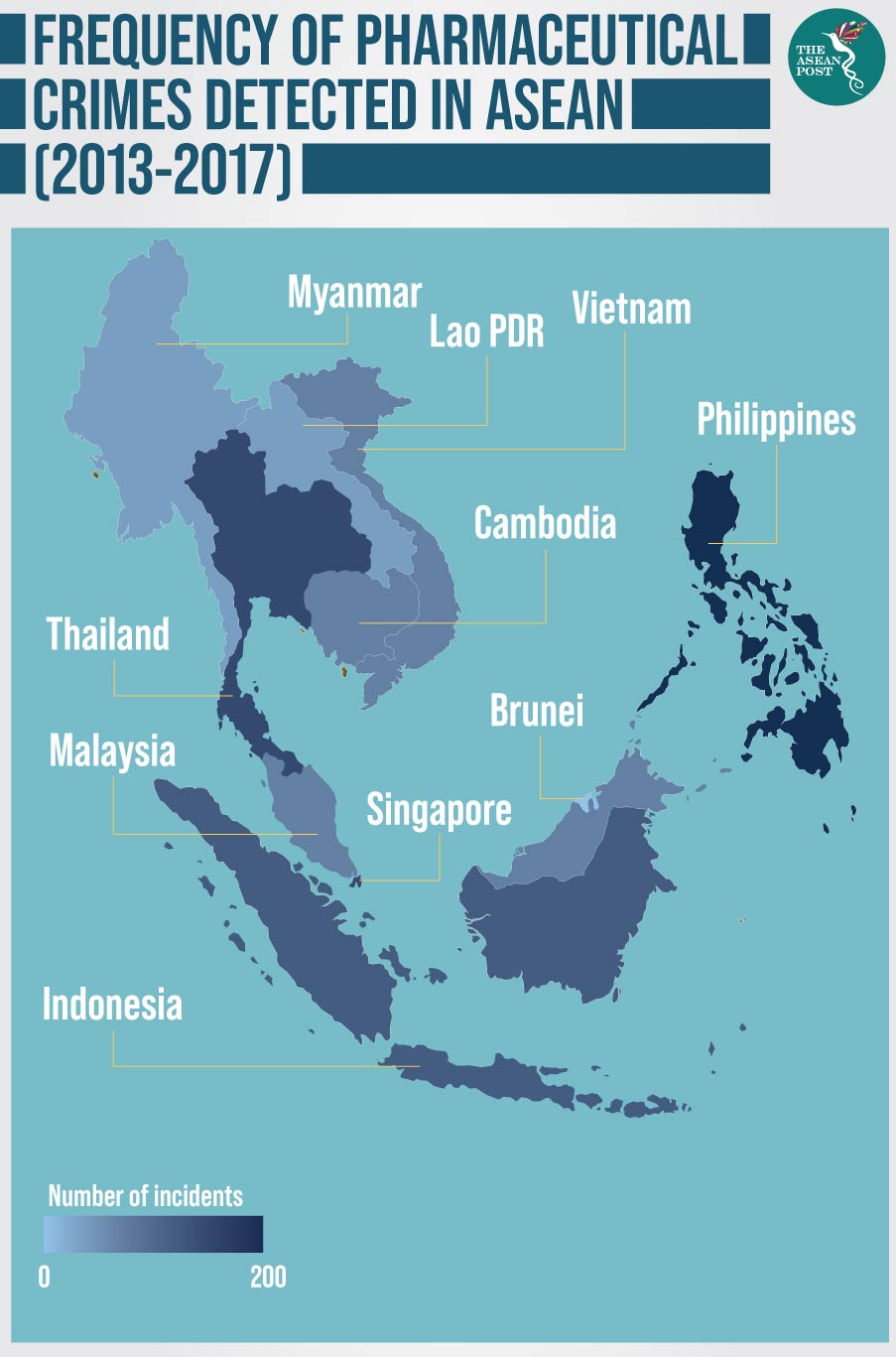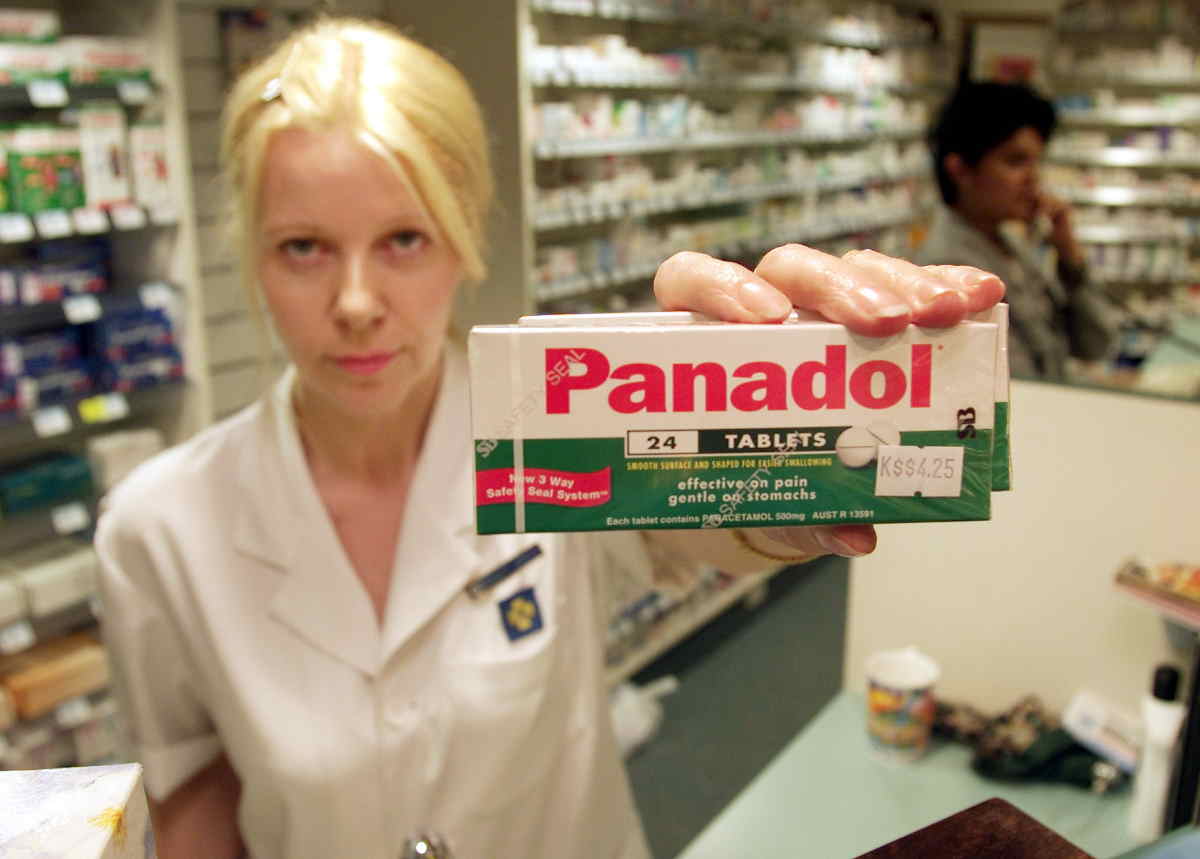ASEAN’s reputation as a hub for fake medicine is nothing to sneeze at.
Increasing amounts of falsified medicines are being produced in ASEAN, in part as a result of legitimate, and illegitimate, pharmaceutical producers based in India and China having transferred or outsourced some manufacturing processes to Malaysia, Vietnam, Myanmar and Cambodia to avoid tougher regulations and enforcement – and to benefit from lower production costs – according to a recent report by the United Nations Office on Drugs and Crime (UNODC).
With nearly half of the anti-malarial medicines tested in Southeast Asia found to be fraudulent, the problem is gaining more attention both regionally and nationally.
Philippine President Rodrigo Duterte last year ordered the police to clamp down on fake medicine manufacturers and sellers, and the issue was also raised at last month’s ASEAN Health Ministers’ Meeting in Cambodia where Cambodian Defence Minister General Tea Banh pointed out that substandard and counterfeit medicines was openly advertised and sold online.
The World Health Organisation (WHO) defines counterfeit medicine as “one which is deliberately and fraudulently mislabelled with respect to identity and/or source.”
These counterfeit medicines range from falsified anti-cancer treatments to drugs for infertility and weight loss, and the issue is a greater threat in remote areas, where poor health systems may drive patients to rely on unregulated medicines providers.
Counterfeiting can apply to both branded and generic products, and counterfeit products may include products with the correct ingredients, wrong ingredients, without active ingredients, with incorrect quantity of active ingredients or with fake packaging.

Data from the Pharmaceutical Security Institute (PSI) shows that of the 673 incidents of counterfeiting and illegal diversion in ASEAN from 2013 to 2017, 193 occurred in the Philippines, 110 in Thailand, 93 in Indonesia, and 49 in Vietnam.
Organised crime
In ASEAN, the counterfeit goods and falsified medicines trade is among the region’s four biggest transnational organised crimes along with the illicit drug market, human trafficking and migrant smuggling and environmental crimes such as wildlife and timber trafficking.
Organised criminal syndicates are actively involved in the illicit online medicine trade, and in Cambodia, traces of ecstasy (MDMA) have been found in fraudulent medicines, indicating that the very same pill presses used to manufacture ecstasy were used to manufacture fraudulent medicines – which is a big business.
The UNODC report titled ‘Transnational Organized Crime in Southeast Asia: Evolution, Growth and Impact’ estimates the amount spent by consumers in Southeast Asia for falsified medicines to be between US$520 million and US$2.6 billion per year.
In 2010, the UNODC estimated the market was worth around US$4 billion.
The UN agency stated that previous tests have shown that 47 percent of anti-malarial medicines tested in Southeast Asia were found to be fraudulent – but the true figure could be much higher.
As the Malaysian Pharmaceutical Society notes, because counterfeiting is difficult to detect, investigate and quantify, it is hard to know or even estimate the true extent of the problem.
A Malaysian pharmacist and blogger wrote about how to spot counterfeit Panadol – a medication that contains paracetamol and is used to treat pain and fever – after accidentally buying some last month; stating that the differences are not obvious to the untrained eye. In response, the drug’s manufacturers GlaxoSmithKline (GSK) issued a statement stating that the “issue of counterfeit Panadol currently seems to be limited to Malaysia.”
The WHO claims there has been “under-investment in supply chain systems and regulatory systems” for pharmaceuticals in ASEAN, so it should come as no surprise that corruption plays a significant role in the trade of falsified medicines.
Familiar with legal loopholes
Some trafficking networks have even recruited current or former pharmaceutical company executives and state officials with knowledge of national regulatory and industrial systems, and the arrests of a number of healthcare professionals in relation to falsified medicines highlights the severity of the issue.
In a case that shocked Vietnam, six former executives of a private pharmaceutical company in Ho Chi Minh City received prison sentences ranging from two to 12 years after they were found guilty of forging paperwork to distribute fake cancer drugs in 2017 – claiming it was manufactured by a company in Canada which investigators later found to be non-existent.
“We are facing unscrupulous dealers, who are very familiar with the legal loopholes and know that nothing is currently being done to trace them,” said Bernard Leroy, Director of the Institute of Research Against Counterfeit Medicines (IRACM).
“In the absence of effective international cooperation like the ones working to sanction drug trafficking, magistrates have no means of dismantling the networks, or of locating and freezing the criminals’ financial assets,” he added.
While ASEAN can do better to tackle this problem through the strengthening of legal frameworks and good governance mechanisms, as long as it remains more profitable and less risky than other organised crimes, falsified medicine is bound to create more headaches.
Related articles:
